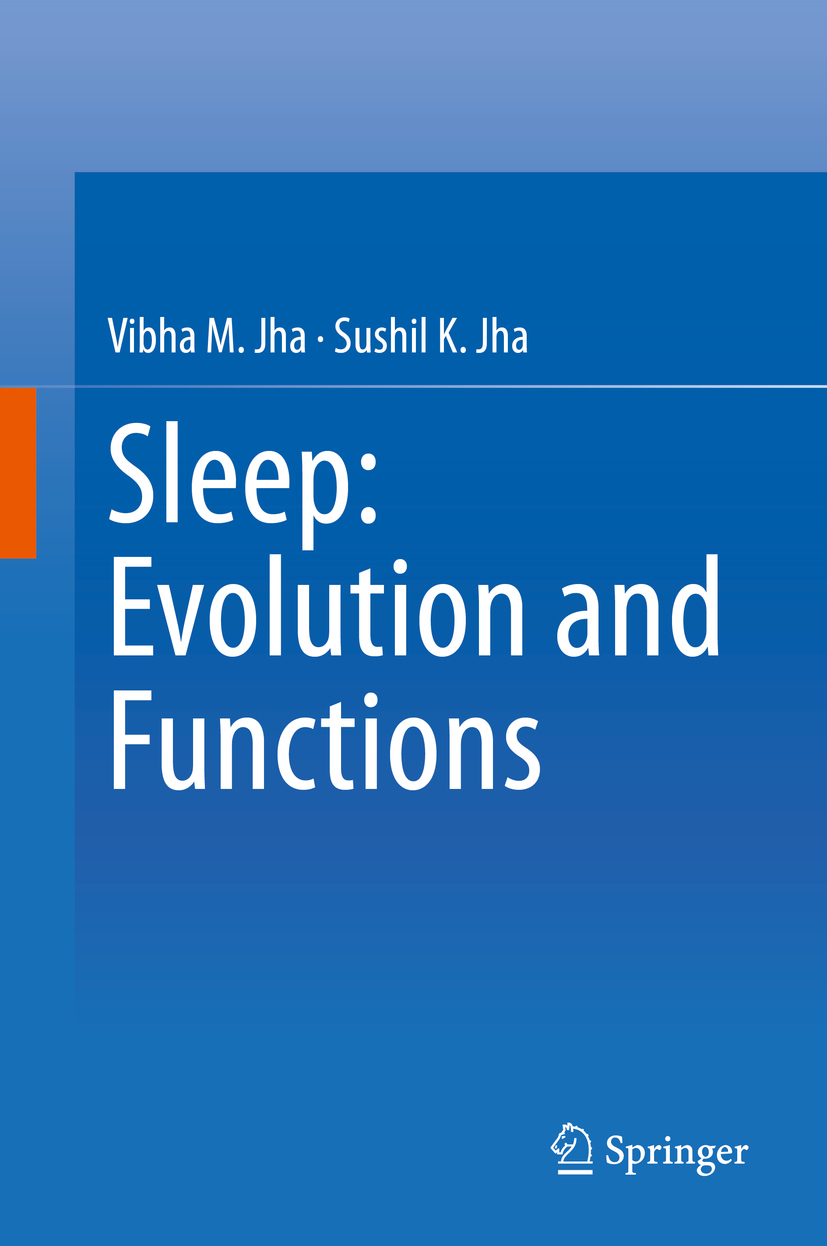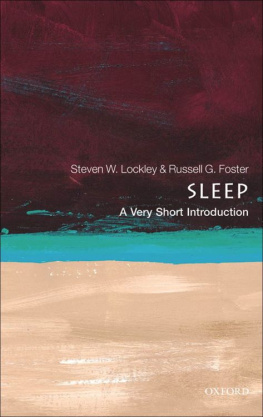Vibha M. Jha - Sleep: Evolution and Functions
Here you can read online Vibha M. Jha - Sleep: Evolution and Functions full text of the book (entire story) in english for free. Download pdf and epub, get meaning, cover and reviews about this ebook. year: 2020, publisher: Springer Singapore, genre: Romance novel. Description of the work, (preface) as well as reviews are available. Best literature library LitArk.com created for fans of good reading and offers a wide selection of genres:
Romance novel
Science fiction
Adventure
Detective
Science
History
Home and family
Prose
Art
Politics
Computer
Non-fiction
Religion
Business
Children
Humor
Choose a favorite category and find really read worthwhile books. Enjoy immersion in the world of imagination, feel the emotions of the characters or learn something new for yourself, make an fascinating discovery.
- Book:Sleep: Evolution and Functions
- Author:
- Publisher:Springer Singapore
- Genre:
- Year:2020
- Rating:5 / 5
- Favourites:Add to favourites
- Your mark:
- 100
- 1
- 2
- 3
- 4
- 5
Sleep: Evolution and Functions: summary, description and annotation
We offer to read an annotation, description, summary or preface (depends on what the author of the book "Sleep: Evolution and Functions" wrote himself). If you haven't found the necessary information about the book — write in the comments, we will try to find it.
Sleep: Evolution and Functions — read online for free the complete book (whole text) full work
Below is the text of the book, divided by pages. System saving the place of the last page read, allows you to conveniently read the book "Sleep: Evolution and Functions" online for free, without having to search again every time where you left off. Put a bookmark, and you can go to the page where you finished reading at any time.
Font size:
Interval:
Bookmark:


This Springer imprint is published by the registered company Springer Nature Singapore Pte Ltd.
The registered company address is: 152 Beach Road, #21-01/04 Gateway East, Singapore 189721, Singapore

To our parents for always loving, supporting, and encouraging us.
And
To our three lovely angels Subhanshi, Suvali, and Sumanvi. You are the three pillars of our life. Without your love and understanding, it would not have been possible to complete this book.
Vibha and Sushil
Mammalian species, including man, have almost exclusively provided the substrate for evaluating the intricate biological tapestry of sleep. Despite decades of intensive research, the functions and purpose of sleep remain elusive. By evaluating nonmammalian and mammalian organisms with a long evolutionary history may provide insight into our understanding of sleep and its functions. It may offer us some clues to find out the ways for sleep management and skills for our rapidly changing society, where the majority among us are living in a sleep-deficient condition.
The electrophysiological expression of sleep varies across phylogeny. In mammals and birds, there are two well-known, cyclically alternating electrophysiological patterns of sleep. They are characterized as non-rapid eye movement (NREM) sleep having high-amplitude and slow-wave electroencephalogram (EEG) activity with reduced muscle tone. Rapid eye movement (REM) sleep is characterized by a low amplitude (EEG) and rapid eye movements, almost similar to waking, but atonia of skeletal muscle is the hallmark of REM sleep. To date, all studied terrestrial mammals and birds exhibit these two distinct sleep stages. However, the same electrophysiology of mammalian NREM and REM sleep has not been convincingly demonstrated in invertebrates and lower vertebrates. Different electrophysiology in nonmammals, for example, distinctive high-amplitude spike activity in various reptiles, is correlated with behavioral sleep, which disappears in behavioral waking.
The imposition of mammalian sleep criteria on nonmammalian species has led to a significant, long-running controversy in the literature. Do the organisms other than mammals and birds have true sleep, or do they manifest significantly different unrelated correlates of sleep/rest? What are the phylogenetic origins of sleep? If this state has perpetuated in phylogeny throughout millions of years, then what does this reveal about the functions of sleep? Why have the phylogenetic and adaptive changes in sleep occurred during evolution? What are the adaptive changes occurring across the life-time, and why would it be? These are some questions that await answers.
Many varied functions have been proposed for sleep, including, among others, the development of neural circuitries, energy conservation, memory consolidation, synaptic plasticity, enhancement of the immune system, brain development, and many more. These functions have been proposed as a result of manipulations such as acute and chronic sleep deprivation, the effects of pharmacological agents, and genetic manipulations at the cellular level in animals model organisms. A current area of interest that ties these diverse topics together pertains to the understanding of human sleep disorders. In this book, we have attempted to explore the phylogenetic origins of sleep, functions of sleep, and the applicability of these findings to human sleep and treatment of its disorders.
The primary aims of this book are (1) to explore the evolution of sleep behavior from an evolutionary and phylogenetic perspective, (2) to evaluate the proposed functions of sleep utilizing experimental research in a variety of mammalian and nonmammalian species, and (3) to assess how this perspective can lead to a broader clinical understanding of human sleep management and its disorders.
is a sleep researcher who focuses on the functions of sleep, especially in learning and memory. She is the author of various research papers and review articles published in international and national journals. She has also contributed numerous chapters in books published by national and international publishers. Dr. Jha is a co-editor of the book Sleep, Memory and Synaptic Plasticity, published by Springer.
Dr. Jha obtained her Ph.D. in Neuroscience from the School of Life Science, Jawaharlal Nehru University, India. Later, she moved to the USA and joined the University of Pennsylvania in Philadelphia. She worked as a Postdoctoral Fellow with Dr. Adrian Morrison at the Department of Anatomy, School of Veterinary Medicine, UPenn. She returned to India in 2007 and continued her work with Dr. Morrison as an overseas Postdoctoral Fellow until 2010. She has been engaged in sleep research since 1999 and has contributed significantly to the field of sleep research.
She is also a recipient of several awards and medals, including the Dr. Ramji Narain Omvati Gold Medal in 1997 and 1999 and the University Gold Medal in 1997 and 1999 for her academic excellence during her biochemistry studies (both awarded by Panjab University, India).
is an Associate Professor at the School of Life Sciences, Jawaharlal Nehru University (JNU), India. He is currently investigating the neuronal and physiological aspects of sleep and the impact of its loss on overall mental and physical health. Dr. Jha has published several research papers and reviews in national and international journals. He has also contributed numerous chapters in books published by national and international publishers. He has appeared on Indian television and in newspapers to raise awareness of the importance of sleep for proper brain functioning.
Font size:
Interval:
Bookmark:
Similar books «Sleep: Evolution and Functions»
Look at similar books to Sleep: Evolution and Functions. We have selected literature similar in name and meaning in the hope of providing readers with more options to find new, interesting, not yet read works.
Discussion, reviews of the book Sleep: Evolution and Functions and just readers' own opinions. Leave your comments, write what you think about the work, its meaning or the main characters. Specify what exactly you liked and what you didn't like, and why you think so.










